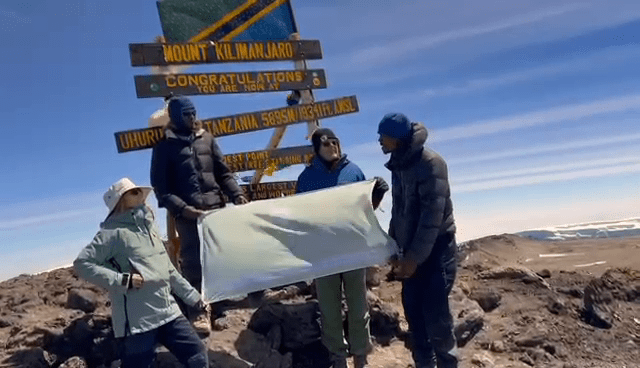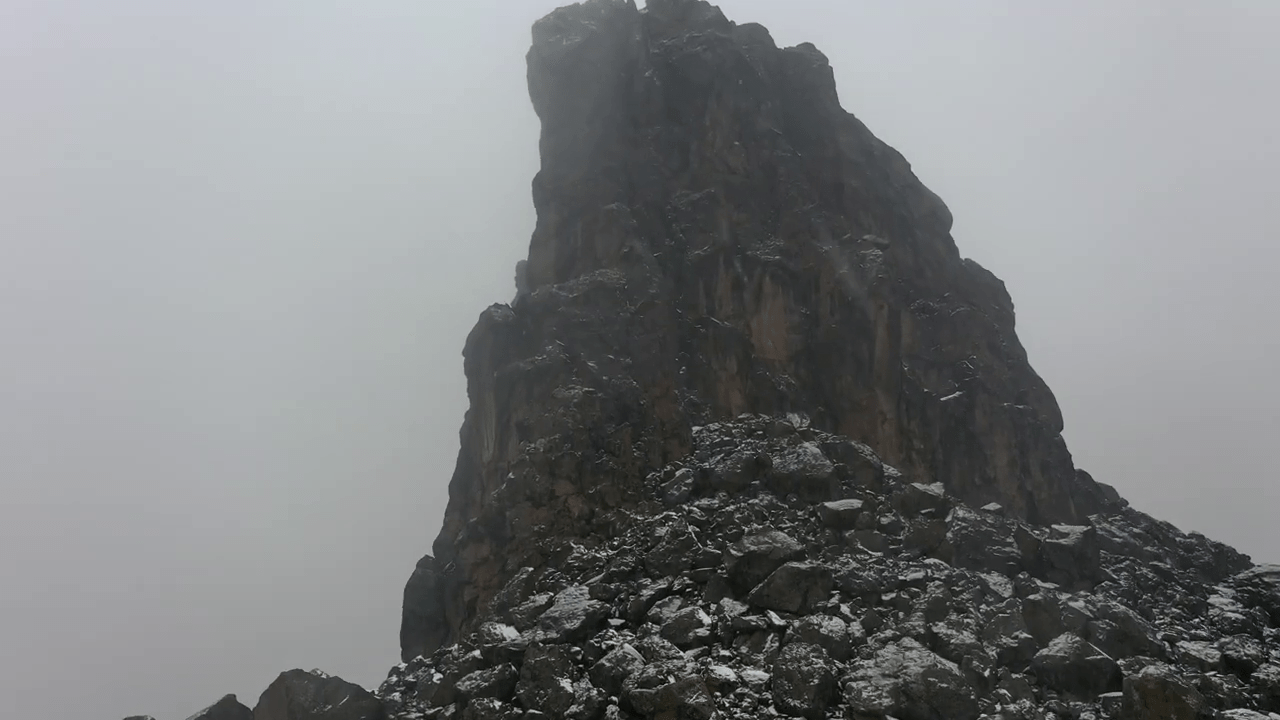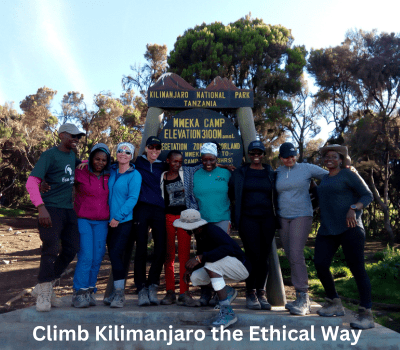Are There Age Restrictions for Climbing Kilimanjaro?

Introduction
Age is Just a Number — Or Is It?
Climbing Mount Kilimanjaro Afrika is the dream of adventurers across generations. From ambitious teenagers to retirees celebrating milestones, thousands set their sights on the Roof of Africa every year. But one important question often comes up: Are there age restrictions for climbing Kilimanjaro?
Short answer: Yes, there are official guidelines, but they are much more flexible and inclusive than most people expect. At Eco-Africa Climbing, we help trekkers from every age group achieve their dream with proper preparation, safety, and encouragement.
Why Kilimanjaro Appeals to All Ages
Unlike technical climbs like Everest or K2, Kilimanjaro is a non-technical trekking peak. That means no ropes, no harnesses, no climbing gear—just your determination, your guide team, and your willingness to put one foot in front of the other.
Because it’s accessible without mountaineering skills, Kilimanjaro attracts climbers aged 10 to 80+. It’s the challenge of a lifetime, but also the summit that’s truly within reach for people of all backgrounds and ages.
Official Age Requirements for Climbing Kilimanjaro
Minimum Age Limit
The minimum legal age to climb Kilimanjaro, according to TANAPA (Tanzania National Parks Authority), is 10 years old. No one younger than 10 is officially allowed to attempt the summit without special permission.
Children under 10 are considered too vulnerable to altitude sickness, hypothermia, and extreme weather conditions that occur above 4,000 meters.
Maximum Age Limit
There is no maximum age limit for climbing Kilimanjaro. As long as you are medically fit and cleared by a doctor, you can attempt the summit at any age!
In fact, Eco-Africa Climbing has guided climbers in their 70s successfully to the summit—proof that dreams don’t retire.
Understanding the Minimum Age Rule
TANAPA Regulations
Tanzania’s National Parks Authority put the 10-year minimum rule in place to protect young children from the serious health risks posed by altitude. Kids’ bodies are still developing, and their ability to acclimatize is unpredictable.
Why the Rule Exists
Altitude sickness, severe dehydration, and exposure risks can escalate quickly in children. Unlike adults, kids may not fully recognize or communicate their symptoms until it’s too late.
Thus, the rule exists to safeguard children’s health and wellbeing. At Eco-Africa Climbing, we fully respect and follow these safety regulations.
Exceptions (Private Routes, Special Permits?)
In very rare cases, special permits might be granted for children under 10 to climb, but this requires:
- Extensive medical clearance
- Private climb arrangement
- Approval from park authorities
However, this is extremely rare and usually discouraged unless the child has significant trekking experience at altitude.
How Young is Too Young?
Physical and Emotional Challenges for Kids
Even kids aged 10+ face unique challenges on Kilimanjaro, including:
- Enduring long trekking hours (5–8 hours daily)
- Coping with freezing temperatures at night
- Managing high altitude symptoms they may not understand
Parents must seriously assess whether their child is mentally prepared, physically resilient, and emotionally stable enough to handle these hardships.
Recommended Young Age Preparation
If you’re bringing a child aged 10–15, Eco-Africa Climbing strongly recommends:
- Choosing longer routes like Northern Circuit (8–9 days) or Lemosho Route (7–8 days) for gradual acclimatization
- Training with hikes carrying small packs
- Discussing mountain conditions openly with them beforehand
How Old is Too Old?
Common Success Stories of Older Climbers
There’s no such thing as “too old” if your body is ready and your mind is determined. Over the years, Kilimanjaro has seen successful summits by climbers well into their 70s and even 80s.
At Eco-Africa Climbing, we’ve proudly guided many trekkers over 60 to Uhuru Peak. Some of the world’s oldest summiteers include:
- Marie (63 years old)
- Gleenman (72 years old)
Age is not the limiting factor—proper preparation, gradual acclimatization, and trusted guides make all the difference.
Key Considerations for Older Adventurers
If you are 60+, you should plan to:
- Schedule a thorough medical checkup (especially heart and lung function tests)
- Choose a longer, gradual route like Northern Circuit
- Focus training on endurance, flexibility, and joint strength
- Give yourself extra rest time before and after the climb
Factors More Important Than Age
Fitness Level
Climbing Kilimanjaro is a physical challenge, not a technical one. You need decent cardiovascular fitness, leg strength, and stamina.
If you can comfortably hike for 5–8 hours a day carrying a light pack, you’re ready—regardless of your birth year.
Mental Toughness
Altitude, cold, and long days test your mental grit more than your muscles. Staying positive, patient, and persistent is vital—especially on summit night.
Young or old, the climb is won first in the mind.
Medical Fitness and Checkups
Before you book your climb, especially if you’re younger than 18 or older than 60, we recommend:
- A general medical exam
- ECG (heart function test) for older trekkers
- Asthma, diabetes, or hypertension checks if you have pre-existing conditions
Download our full pre-climb medical advice here: Medical Checkup Guide.
Medical Checkup Requirements Before the Climb
Why a Doctor’s Approval is Vital
Altitude stress, physical exertion, and sleeping in cold environments place unusual demands on your body. A doctor’s approval gives you peace of mind—and ensures your safety on the mountain.
At Eco-Africa Climbing, we ask all climbers with known medical conditions to provide doctor’s clearance before booking.
What to Check Before Attempting Kilimanjaro
Important areas your doctor should check:
- Heart health (blood pressure, cholesterol, cardiac risk)
- Respiratory function (especially if you have asthma or COPD)
- Diabetes management
- History of altitude sickness if applicable
Also, discuss medications like Diamox for altitude acclimatization.
Training Tips for Younger and Older Climbers
Physical Conditioning for Kilimanjaro
Training should focus on:
- Endurance hiking (long, steady walks on hills)
- Strength training (especially legs, core, and back)
- Cardio workouts (brisk walking, cycling, or swimming)
Follow a proven program like our 12-Week Kilimanjaro Training Plan for maximum success.
Special Training for Older Trekkers
Older climbers should add:
- Balance exercises (to prevent falls)
- Joint strengthening routines (knees, hips, ankles)
- Flexible stretching to reduce injury risk
Recommended Timeline for Training
Start training at least 12–16 weeks before your climb. Gradually increase intensity to simulate the demands of multi-day trekking at high altitude.
Recommended Routes Based on Age
Best Routes for Kids (Longer and Gradual)
When trekking with younger climbers, choosing the right route can make or break the experience. The best options are:
- Northern Circuit Route (9 days) — The longest route offering the best acclimatization profile, making it perfect for kids who need gradual altitude gain.
- Lemosho Route (7–8 days) — Scenic, steady, and less crowded; a family-friendly option providing great acclimatization opportunities.
Best Routes for Senior Climbers (Easier and Slower)
For older trekkers, we recommend:
- Northern Circuit Route — Again the top choice because of its longer itinerary and highest summit success rates.
- Machame Route (7 days) — Slightly more challenging, but a good choice for those fit enough and looking for a classic experience with proper acclimatization built in.
Avoid short routes like Marangu 5–6 days if you’re older or climbing with kids—they don’t offer enough time to adjust safely.
Eco-Africa Climbing’s Approach to Age Inclusivity
Customized Climbs for Every Age Group
At Eco-Africa Climbing, we tailor our Kilimanjaro expeditions to meet your specific needs—whether you’re 10 years old or 75.
We offer:
- Private family climbs with kid-focused pacing
- Senior-friendly itineraries with extra rest days
- Health monitoring and special dietary accommodations
- Extra assistant guides for close support if needed
Special Safety Measures and Support
Every group benefits from:
- Daily pulse oximeter readings (Pulse Oximeter info)
- Emergency oxygen carried on all climbs (Emergency Oxygen)
- Satellite phone communications for emergencies
- Access to Kilimanjaro Helicopter Rescue services if needed
Inspirational Stories: Youngest and Oldest to Climb
Young Achievers
Several young climbers have stunned the world by reaching the summit at an early age. For example:
- Keats Boyd: Summited at just 7 years old in 2008 (special permit required).
- Coaltan Tanner: Became the youngest known person to summit at age 6 (special permission granted).
These incredible achievements show that with the right preparation, anything is possible—even for the youngest adventurers.
Senior Legends
Seniors have proven that life’s most epic moments don’t have an expiration date. Some of the oldest summiteers include:
- Anne Lorimor (USA): 89 years old, summited in 2019.
- Angela Vorobeva (Russia): 86 years old, completed Kilimanjaro trek in 2015.
Their stories are proof that mindset and perseverance can triumph over age!
FAQs About Age and Climbing Kilimanjaro
What is the minimum age to climb Kilimanjaro?
According to TANAPA regulations, the minimum age to climb Kilimanjaro is 10 years old. Special permits for younger climbers are extremely rare and require exceptional preparation and approval.
Is there a maximum age limit to climb Kilimanjaro?
No! There’s no official maximum age limit. Climbers as old as 89 have successfully summited. Health, fitness, and preparation are far more important than age.
Can seniors climb Kilimanjaro safely?
Absolutely. With proper medical clearance, good training, a gradual route, and expert support from Eco-Africa Climbing, many seniors have reached Uhuru Peak safely and proudly.
What if my child shows signs of altitude sickness?
If any climber—young or old—shows concerning symptoms, the only safe response is to descend immediately. Our guides are trained in early detection and emergency management, including carrying emergency oxygen and coordinating evacuations if necessary.
Which route should I choose for kids or seniors?
We recommend the Northern Circuit Route or Lemosho Route because they allow the most time for acclimatization, which increases safety and summit success chances.
Helpful Resources for Preparing to Climb Kilimanjaro
- Kilimanjaro Gear List
- 12-Week Kilimanjaro Training Program
- Medical Checkup Before Your Climb
- Altitude Sickness Awareness Guide
- Why Choose Eco-Africa Climbing
Conclusion: Age is Just a Mindset
Mount Kilimanjaro doesn’t care how old you are—it rewards preparation, determination, and respect for the mountain. Whether you’re 10 years old or 80 years young, the dream of standing on Africa’s highest point is absolutely within your reach.
With expert guidance, proper training, and the passionate support of Eco-Africa Climbing, your age becomes just a number—and your summit becomes your story.
Ready to start your adventure?
Contact Eco-Africa Climbing today and let’s create your personalized climb to the Roof of Africa!
Share:
Related Posts

bathroom on mountain kilimanjaro
Bathroom on Mountain Kilimanjaro: What to Expect and How to Prepare Introduction One of the most common — and least discussed — questions from people

Are Guides Readily Available in Tanzania Without Prior Booking?
Are Guides Readily Available in Tanzania Without Prior Booking? Introduction: Should You Risk Climbing Without Pre-Booking? Climbing Mount Kilimanjaro is a dream for many adventurers.

How Can I Find a Reliable Local Guide for My Kilimanjaro Expedition?
How Can I Find a Reliable Local Guide for My Kilimanjaro Expedition? Introduction: Why the Right Guide Is Key to Kilimanjaro Success Climbing Mount Kilimanjaro

Is Climbing Kilimanjaro Dangerous for Individuals Without Mountaineering Experience?
Is Climbing Kilimanjaro Dangerous for Individuals Without Mountaineering Experience? Introduction: The Myth of Danger and Experience Many aspiring adventurers wonder if climbing Mount Kilimanjaro is
